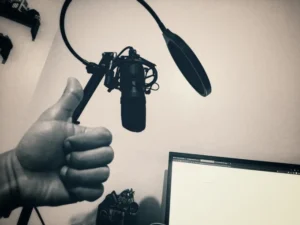There are many perks to globalization, or the international sharing of cultural wealth such as cuisine, market goods, and media. However, media that are not dubbed for language translation can exclude millions of potential viewers. If you’re unsure how to translate your media project or need help knowing which kind of dubbing to use, keep reading. Lipsync International Corporation, one of Miami’s top voiceover agencies, is here to guide you through these choices.
What Voiceover Agencies Can Do For You
Opting for foreign-language dubbing is one of the best ways to expand your audience and build international rapport. Perhaps you need to translate an important speech or global event or desire to create worldwide access to your instructional videos. A multimedia translation company like ours can help you choose the best type of dubbing for your project. Typically, we advise using a voiceover technique when your video requires narration or interpretation, as in a presidential speech. We recommend dubbing for longer segments of language replacement within an artistic film.
Voiceover For Narration And Interpretation
As the term implies, a voiceover technique layers a new audio recording over a previously-filmed video, retaining its original audio. In the case of a narration segment, the viewer may not notice the layering, especially if there is little to no speech content in the original audio. Voiceover is used for interpretation when the original audio contains speech in a language foreign to what the viewer presumably knows. For instance, a documentary about shepherding in Afghanistan intended for PBS viewers would need to translate any interviews done in Pashto. In this instance, most viewers are content to hear a subdued version of the original audio with a clear, English translation piped over it.
Dubbing For A Localized Experience
When it comes to language translation, voiceover inadvertently tends to call attention to the fact that the speaker is using a different language. The layered effect of two voices speaking simultaneously, one in a language the viewer doesn’t know and one in a language they do, can be clumsy and distracting to the overall emotion you are trying to convey. For a more natural, localized effect on audio translation, choose to dub your film. Good quality dubbing replaces the original audio with a translation of the audio that best fits your video. For instance, the speech patterns between Cantonese and French vastly differ. Dubbing French translation directly onto a video originally filmed in Cantonese would cause severe lip-sync mismatch. Instead, a good dubbing job will alter the translation to better fit the lips of the speaker without significantly changing the meaning. With good voice actors, this voice replacement technique can transmit the original emotional content better than a voiceover would.
Contact Us
If you’re looking for voiceover agencies in Miami on an excellent dubbing job, look no further than Lipsync International Corporation. Our translation specialists and audio engineers will collaborate to provide you a masterful, globalized rendering of your original film. Contact us today!



